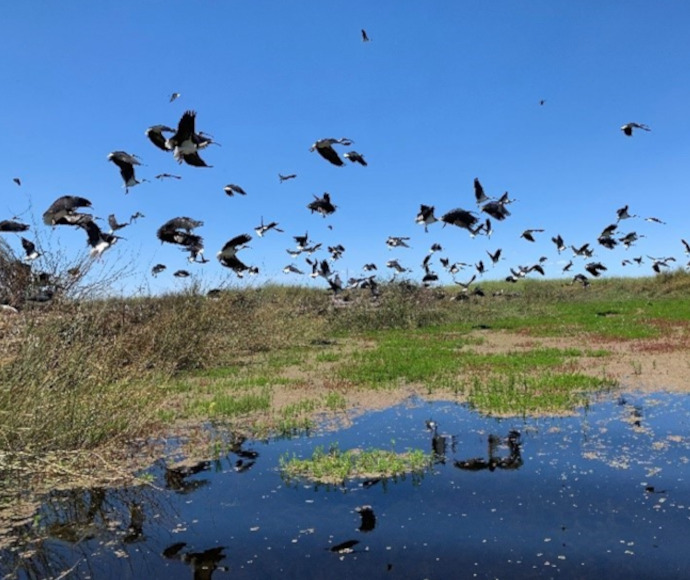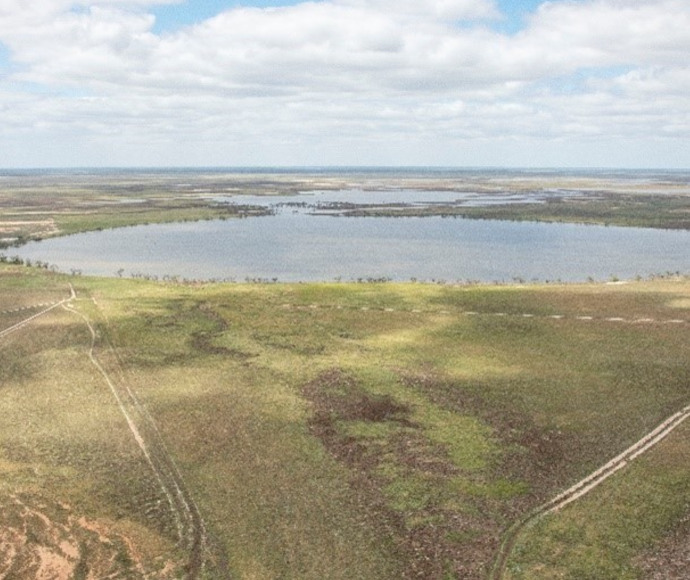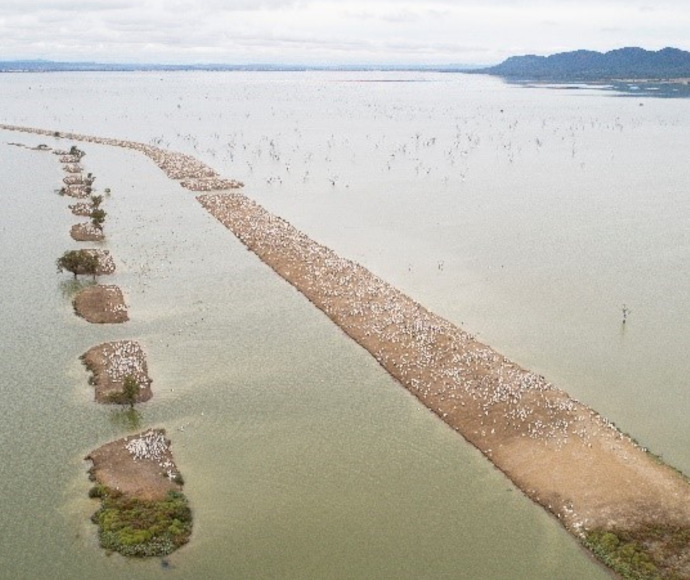On Tuesday 8 August 2023, the Lachlan Environmental Water Advisory Group met at Cowra to consider potential environmental watering priorities for the 2023–24 water year.
Operations update
Below-average rainfall and above average maximum temperatures are forecast for August to October 2023 as the likelihood of El Niño conditions develop. Wyangala Dam is almost full. The airspace management reference panel agreed to maintain the storage at 97.4% at the end of July 2023 as irrigation orders are expected mid-August 2023.
Water for the environment event update
A wet catchment during winter 2022 provided the NSW Water for the Environment program a rare opportunity to deliver flows to Dry Lake in the lower Merrimajeel Creek system. Landholder infrastructure was used to pump 1,695 ML of Environmental Water Allowance (EWA) and Held Environmental Water (HEW) over 76 days, finishing on 8 October 2022. The event coincided with significant local rainfall which is estimated to have contributed a similar volume to the event in unregulated creek flows. The event inundated 554 hectares of the core target delivery area which is comparable to the 2016–17 flooding extent in the area. Vegetation condition will be assessed in spring 2023. Local landholders have reported large-scale waterbird activity.
Waterbird breeding results 2022–23
Results for the 3 waterbird rookeries monitored using drone technology in the Lachlan for the 2022–23 season included 144,957 straw-necked ibis nests at Booligal Swamp, 26,180 straw-necked ibis nest at upper Merrimajeel near Booligal and 33,436 Australian pelican nests at Lake Brewster.
The two Booligal rookeries accounted for 44% of straw-necked ibis counted in the Murray-Darling Basin that year. Waterbird breeding monitoring results for 2022–23 were presented by Kate Brandis from the University of New South Wales. The waterbird breeding program in south-eastern Australia has been undertaken annually since 1984.
Watering priorities 2023–24
A wet to very wet catchment provides the NSW Water for the Environment program with an opportunity to restore key floodplain and wetland connectivity and enhance opportunities for plants and animals to breed, move and thrive. Planned environmental water events in the short term will be within-channel and discrete wetlands, considering the large-scale disturbance of prolonged flooding which, in some cases, impacted the health of tree species.
Potential watering actions for 2023–24 include:
- Murray cod nesting – water for the environment may be used to support spawning and dispersal from near Jemalong to downstream of Hillston from August until December 2023.
- Lake Brewster pelicans and Lower Lachlan waterbird breeding – in the event of a large-scale waterbird breeding event, environmental water managers will support the completion of nesting by maintaining water levels to support water quality, food source and reduce the risk of predation.
- Booberoi Creek – Bridge crossing works at Booberoi Creek will require the creek bed to be pumped dry. There may be an option to bypass this part of the creek and deliver water for the environment to the first weir pool and beyond with private pumping and channel infrastructure. Monitoring shows a small body native fish population present in this reach.
Protecting native fish from extraction with fish screens
Modern fish-protection screens are good for farms and good for native fish. They represent a new best-practice for water access, with benefits for businesses and biodiversity. Modern fish screens keep fish and debris in the river, and out of irrigation infrastructure. This means reduced maintenance, down time and pumping costs for water users.
The Commonwealth Environmental Water Holder is partnering with the NSW Department of Primary Industries – Fisheries to install modern fish screens in the Lachlan River valley. The goal is to protect native fish, maximise the outcomes of environmental flow delivery and boost awareness of the technology.
Further information about the Lachlan River fish screening project can be found on the CEWO Environmental Activities Framework (CEAF) website.
The Lachlan Environmental Water Advisory Group visited a local irrigator in Cowra to view their fish screen and to learn about its benefits to their operation.
For more information on the project and modern fish screens:
- visit fishscreens.org.au
- call DPI Fisheries on 1800 677 572
- email [email protected].


